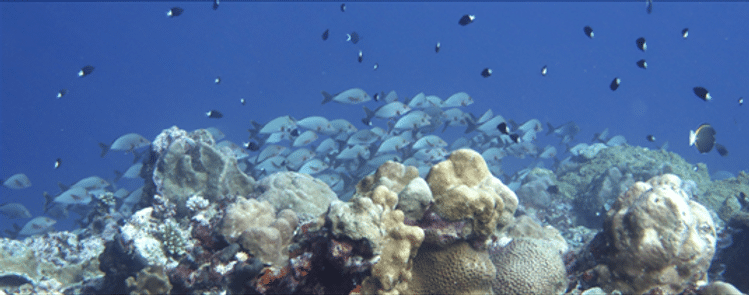Palau’s marine sanctuary protects tuna during spawning period
Palau's Marine Sanctuary: A Safe Haven for Tuna

Recent research has revealed significant findings about tuna spawning within the Palau National Marine Sanctuary. This sanctuary, established to protect marine life, is crucial in safeguarding tuna during their vital life stages. The study, led by the Palau International Coral Reef Center (PICRC), highlights the importance of marine protected areas in conserving fish populations. The findings suggest that the sanctuary not only supports the region’s biodiversity but also enhances the resilience of tuna populations against environmental changes.
The Role of the Palau National Marine Sanctuary
The Palau National Marine Sanctuary is a vast marine protected area that spans nearly 500,000 square kilometers of Palau’s exclusive economic zone. Established in 2015 and fully implemented in January 2020, the sanctuary restricts 80% of the area from any extractive activities. This includes commercial fishing, allowing only limited artisanal fishing in the remaining 20%. The primary goal of this sanctuary is to combat overfishing and to promote the sustainable development of local fisheries.
Research conducted within the sanctuary has shown that tuna spawn in this protected area. The study utilized plankton nets to sample the top 50 meters of water, focusing on the diversity and abundance of tuna larvae. Researchers collected 22 tuna larvae from five different sites, indicating that these areas are crucial for the reproductive success of tuna. The findings suggest that the sanctuary provides essential protection for tuna populations during their spawning periods, which is vital for maintaining healthy fish stocks.
Dr. Louw Claassens, a lead researcher from PICRC, emphasized the importance of this research. He noted that the findings align with previous studies on tropical tuna larvae and spawning activities observed in other large-scale marine protected areas. This research not only contributes to the understanding of tuna ecology but also supports the development of effective conservation strategies.
MSC’s 2023 Sustainability Report: Navigating Transition and Achieving Milestones
Advancing Marine Research in Small Island States
The PICRC study also aims to create a platform for conducting large-scale ocean research in small island nations like Palau. These regions often face challenges due to limited resources and expertise. The researchers designed a five-step framework to facilitate offshore research, addressing common challenges and providing practical tips for future studies. This initiative is crucial as the demand for marine research continues to grow, particularly in areas with rich biodiversity and unique ecosystems.
Large-scale marine protected areas, such as the Palau National Marine Sanctuary, are increasingly recognized for their role in species conservation. They help encompass entire species’ home ranges and ecosystems, reducing direct human impacts. This approach not only supports the conservation of marine species but also enhances their resilience to climate change. The PICRC’s findings contribute to a broader understanding of how marine protected areas can effectively support biodiversity and sustainable fisheries.
As the global community aims to achieve 30% ocean conservation by 2030, the success of the Palau National Marine Sanctuary serves as a model for other regions. The sanctuary’s commitment to protecting marine life and promoting sustainable practices is a vital step toward ensuring the health of our oceans for future generations.
